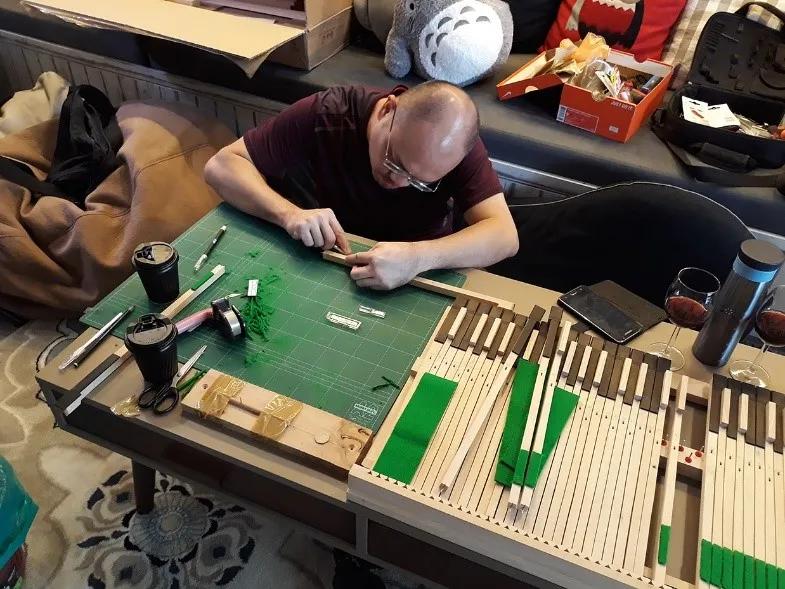Performing Musicology: Carving a Place for Research-Creation in Western Classical Music
The area of research-creation in Western classical music needs one, and I propose it be called “performing musicology”.
In music performance, there is a perceived split between those who focus on the creative process, and those on research. For the former, there are the likes of composers and performers, while in the latter, there are ethnomusicologists and musicologists. I have spent the past decade in the company of those in between these two tracks and often we go by double-barrelled descriptions such as “violinist and researcher”.
In many cases, we do not actually wear two hats: we have found a meaningful way to combine our interests in sharing music with audiences and sharing discoveries and knowledge with fellow academics. With my own efforts in research-creation as a basis, here are some categories in which performers can be encouraged to do research, and researchers can be encouraged to keep a connection to performance.
1. The Lab
At times, science informs the arts, from instrument construction to the intricacies of recording. I am interested in understanding how altered tunings on stringed instruments affect sound colours, projection, and resonances. We can see this using Free Fourier Transform: essentially a map of multi-layered frequencies in almost all sounds around us with darkness indicating relative strengths of different frequency layers, as seen in Illustration 1.
Illustration 1: Free Fourier Transform analysis of altered string tunings of a viola
An informal lab is wherever the researcher is able to experiment with tunings, notice certain patterns, and take aural observations as a basis to project possible applications within the repertoire to enhance performance or resolve issues. This process is fairly subjective (which is not a sin), and bringing it into the formal laboratory brings an objective element that allows for a clearer view of the applicability of an approach. Visualising resonances pre-dates electronic approaches, as seen in Illustration 2.
Illustration 2: A visual effect of how evenly distributed black powder moves to different resonant frequencies on a violin plate
2. The Library
Traditional library- and archive-based research can impact music performance through the production of music editions. The term “edition” often causes confusion in academia: in music, one can produce a new edition of a composition from centuries past. The new knowledge could originate from a discovery of a new manuscript, or a better understanding of history or of instruments. One of the popular works for the viola is by German composer G.P. Telemann—the problem is: it was not written for violas, it was written for the “violetta”, an instrument which has gone extinct.
Illustration 3: 1981 German stamp of Telemann, with a score that includes the violetta
Using string tuning experiments mentioned earlier, along with historical records and existing scholarship, an approach was formulated to approximate the sound of the instrument. With co-author David Bynog, we assessed conflicting previous editions and produced what is known as a critical edition—a source providing access not only to the editors’ decisions, but a near-complete record of all preceding editions. This impacts performers, who can make different decisions from this single resource.
3. The Workshop
Let us conclude with the actual art of creation. In 2019, the present author was one-third of a team that constructed the first harpsichord built in Malaysia and by Malaysians, seen in Illustration 4.
Illustration 4: Constructing the harpsichord of the historically informed performance practice ensemble Wicked Music People
The exercise opened up a wide array of potential research questions and presented initial data; particularly that humidity and temperature affect the expansion of various wood parts, requiring changes in the construction process. This goes beyond what the manual of the Paris Workshop provides, and has the potential for the eventual publication of a new manual for this region.
Conclusions
From a research perspective, the identification of performing musicology provides a range of benefits, not least in indicating the research value in artistic productions like concerts and installations. These scholarly productions can function in multiple ways; not only in validating research results, but also as data collection opportunities (such as interviews with performers and recordings of concerts) for further analysis. There are also opportunities for living composers: The authors recently collaborated with Singaporean composer Chen Zhangyi to produce a recording of a new work for a festival at University of Cambridge. At the end of the day, the recognition of the field of performing musicology can provide a much-needed public spotlight on the value the arts have on the research process—and the value the arts can provide to research institutions.
Illustration 5: Performance of a new edition of Bach’s Brandenburg Concerto No. 6 at the International Viola Congress in Germany. Photo credit: Dwight Pounds.
Associate Professor Dr Andrew Brian Filmer
School of Arts
Email: @email




